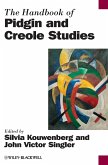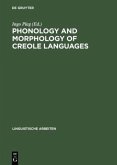This textbook is a clear and concise introduction to the study of how new languages come into being. Starting with an overview of the field's basic concepts, it surveys the new languages that developed as a result of the European expansion to the Americas, Africa, Asia and the Pacific. Long misunderstood as 'bad' versions of European languages, today such varieties as Jamaican Creole English, Haitian Creole French and New Guinea Pidgin are recognized as distinct languages in their own right. John Holm examines the structure of these pidgins and creoles, the social history of their speakers, and the theories put forward to explain how their vocabularies, sound systems and grammars evolved. His new findings on structural typology, including non-Atlantic creoles, permit a wide-ranging assessment of the nature of restructured languages worldwide. This much-needed book will be welcomed by students and researchers in linguistics, sociolinguistics, western European languages, anthropology and sociology.








